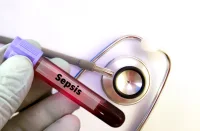Sepsis is a serious global health issue, with septic shock carrying a high mortality rate (~38.5%). The optimal blood pressure target for managing septic shock remains unclear. Recent trials show that maintaining a mean arterial pressure (MAP) above 65 mmHg isn’t always beneficial, but higher targets (80–85 mmHg) may help patients with chronic hypertension. Effects may differ by age, disease type, and patient demographics, and prior studies had limitations such as varied patient groups and potential side effects from high catecholamine use.
To address these gaps, the Optimal Target Blood Pressure in Elderly with Septic Shock (OPTPRESS) trial was conducted in Japan targeting a higher MAP with early vasopressin use in septic shock patients aged 65 or older, where chronic hypertension is common (66.9%).
The trial was conducted across 29 hospitals in Japan, where chronic hypertension is common among older adults (66.9%). Patients aged 65 or older with septic shock admitted to the ICU were randomly assigned to either a high MAP target group (80–85 mmHg) or a control group (65–70 mmHg) from July 2021 to December 2023. The target MAP was maintained for up to 72 hours or until vasopressor support was no longer needed. The primary outcome measured was 90-day all-cause mortality, with secondary outcomes including organ support-free days and adverse events.
The trial was stopped early because interim results indicated harm from targeting a high MAP. Among 518 patients (258 in the high-target group and 260 in the control group), 90-day mortality was higher in the high-target group (39.3%) compared to the control group (28.6%), with a risk difference of 10.7%. Additionally, patients in the high-target group had fewer renal replacement therapy–free days at 28 days. No benefits from the high-target strategy were seen in any subgroup, including those with chronic hypertension.
The OPTPRESS trial found that targeting higher MAP significantly increased mortality and worsened secondary outcomes like organ support-free days, with little impact from factors such as chronic hypertension. Unlike Western trials suggesting no benefit for higher MAP targets, this study adds global relevance by focusing on an underrepresented population with distinct disease patterns.
Although the control group’s MAP often exceeded targets due to clinical improvement, there was clear separation between groups from 8 hours onward, supporting the validity of the comparison. The high-target group received more vasopressors, which may have caused harm through excessive vasoconstriction and other adverse effects, especially in older patients. However, no differences were observed in deaths from ischaemic events.
Contrary to some previous studies, the trial found no renal benefits from the higher MAP target, possibly due to differences in patient characteristics. Personalised blood pressure management shows promise but is difficult to implement in emergency septic shock settings where baseline blood pressure and cardiovascular status are often unknown. This trial did not standardise cardiac monitoring or vasopressor titration, which are important considerations for future research.
Overall, the trial provides valuable insights but highlights the need for further research on individualised haemodynamic management in diverse populations. Until new evidence emerges, careful avoidance of excessive vasopressor use is advisable.
Source: Intensive Care Medicine
Image Credit: iStock
References:
Endo A, Yamakawa K, Tagami T et al. (2025) Efficacy of targeting high mean arterial pressure for older patients with septic shock (OPTPRESS): a multicentre, pragmatic, open-label, randomised controlled trial. Intensive Care Medicine. 51:883-892.










